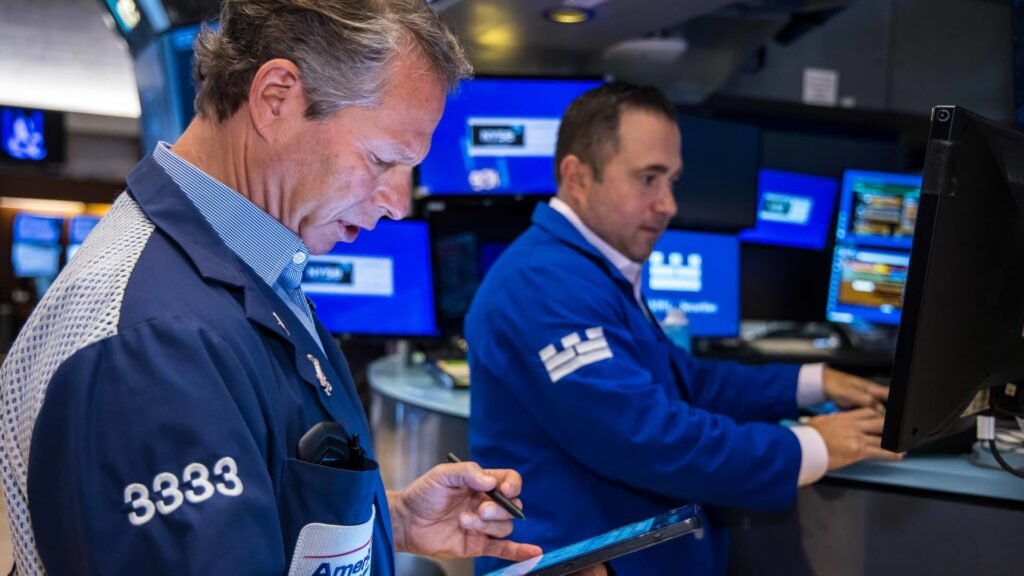One market indicator shows traders are bracing for increased volatility around the upcoming November election in the United States. Stacey Gilbert, chief investment officer at Glenmade Investment Management, said futures markets for the Chicago Board Options Exchange Volatility Index are showing distortions around the November election. “We’re seeing real distortions in the curve that we haven’t seen in other years. … We’re hopeful that in the next couple of months we’ll have a better sense of investor expectations,” Gilbert said. The index, which traders call the Vix, is a measure of expected volatility and is sometimes called Wall Street’s “fear index.” Vix futures are essentially a way to bet or hedge on where the index will trade at expiration. Since the Vix itself is a forward-looking tool, the expiration date of the October futures (its highest reading in the short term) reflects the potential volatility around the election. “Obviously investors are concerned about this election. There’s a lot of expectation of a lot of volatility around this election,” Gilbert said. With Donald Trump comfortably winning the Republican primary and President Joe Biden facing no significant challenger on the Democratic side, the presidential election doesn’t seem to be driving the market so far this year. But with the first debate scheduled for Thursday, the race could soon start to become a major focus. The curve isn’t the only sign that investors are nervous about the election. About 16% of fund managers said the U.S. presidential election is the biggest tail risk for the market, up from 9% in May, according to a Bank of America fund manager survey. Elections are usually some kind of turning point for markets, according to Ed Clissold, chief U.S. strategist at Ned Davis Research. And there’s more uncertainty in this election cycle. Clissold noted that this is the first presidential rematch since 1956, and that while one of the biggest issues in the 2020 election campaign was the response to the COVID-19 pandemic, this is no longer the biggest concern for voters. “Markets tend to dip into elections, and then when a winner is known, especially when it’s a close race because of the uncertainty, they tend to rally out of relief. We’ve seen that with both Democratic and Republican administrations,” Clissold said. “It makes sense to see the VIX, or volatility in general, rise around that time,” he added. To be sure, the VIX itself is currently quite low by historical standards. The futures curve on Friday morning had the October contract priced at 19, which is also a sharp rise but not historically high.

